ROME - ARTICLES
2005
Long Lost Star Catalog Found in Plain Sight - Space.com - January 2005
The long lost star catalog of Hipparchus has been under our noses or,
more accurately, slightly above them for more than 1,800 years.
Ancient Astronomer's Work Found on Roman Statue
Lost Ancient Star Catalogue Found - Discovery - January 2005
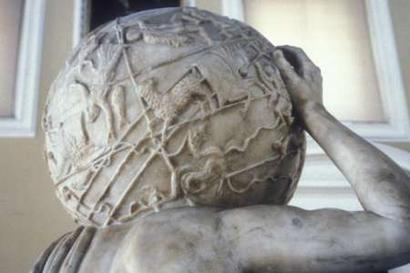
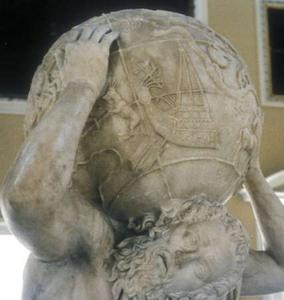
Researchers find possible da Vinci workshop MSNBC
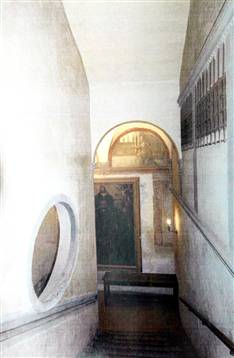
Da Vinci's Secret Workroom Located Discovery
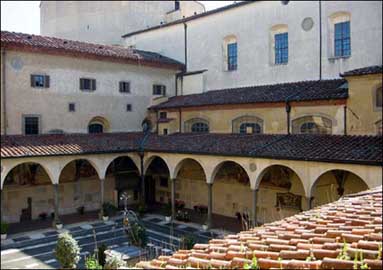
Roman-Era Britons Lived In Suburbia Discovery - January 2005
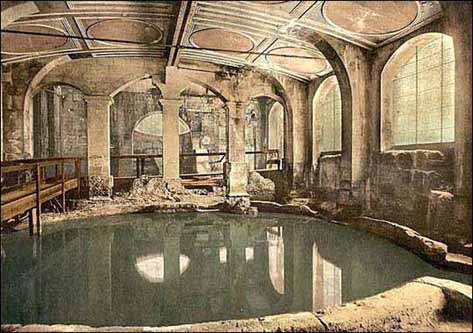
2004
Cleopatra Seduces Antony on Vase Discovery - April 2004
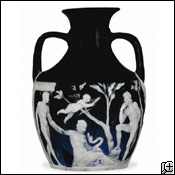 The epic romance between Egyptian queen Cleopatra and the
Roman general Marc Antony was immortalized on a Roman vase.
The epic romance between Egyptian queen Cleopatra and the
Roman general Marc Antony was immortalized on a Roman vase.
Italian Skeletons Reveal Old World Diseases Discovery - April 2004
 Before Columbus discovered the New World, Italy had no arthritis or syphilis.
Before Columbus discovered the New World, Italy had no arthritis or syphilis.
Rome: Dig unearths ancient love affair - 200 AD BBC - March 2004
Ancient Port Found Below Naples Discovery - January 2004
2003
Ancient City, 'Little Rome' Discovered Discovery News - November 2003
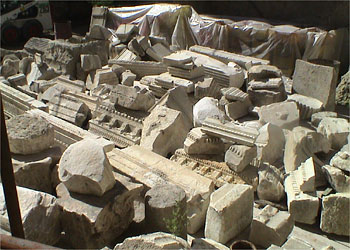 After 10 years of digging, "Little Rome," as the great Roman orator Cicero
called it, is coming to light nearNaples, in what could be the most important
discovery of an ancient Roman town since theexcavation of lava-entombed
Pompeii and Herculaneum in the 18th century.
After 10 years of digging, "Little Rome," as the great Roman orator Cicero
called it, is coming to light nearNaples, in what could be the most important
discovery of an ancient Roman town since theexcavation of lava-entombed
Pompeii and Herculaneum in the 18th century.
Italy: Ancient Tombs Reveal Bronze Age Civilization Discovery - October 2003
Archaeologists
unearth evidence of Roman sock crime August 2003 - Ananova
Ancient Roman cosmetic cream unearthed August 2003 - New Scientist
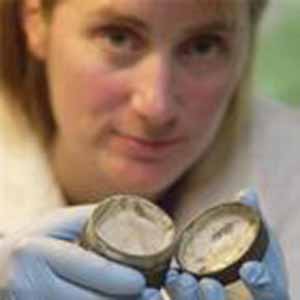
Romans responsible for a rudimentary version of virtual
reality May 2003 - BBC News
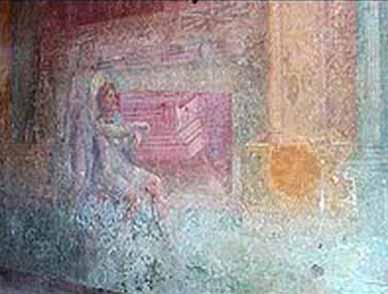 The Romans invented many things but it may come as a
surprise to some that they could also be responsible
for a rudimentary version of virtual reality.
The Romans invented many things but it may come as a
surprise to some that they could also be responsible
for a rudimentary version of virtual reality.
Crystalinks: Virtual Reality
Crystalinks: Matrix Reloaded - May 15, 2003
2002
Rome obelisk struck by
lightning May 2002 - BBC
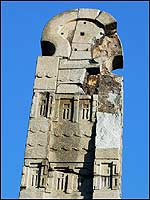 An ancient obelisk which has been at the center of a
dispute between Italy and Ethiopia has been damaged.
An ancient obelisk which has been at the center of a
dispute between Italy and Ethiopia has been damaged.
2,000-year-old paintings found near Pompeii
November 7, 2000 - Reuters
Frescoes nearly 2,000 years old have been
unearthed near Pompeii in the remains of a structure that experts
say may have been an ancient luxury hotel.
The frescoes were painted shortly before the A.D. 79 volcanic
eruption that buried Pompeii, the ancient city's art
superintendent, Pier Giovanni Guzzo, said Monday.
One of the best-preserved portrays Calliope, the Greek muse of
epic poetry, against a vivid red backdrop. Others depict Erato, the
lyre-playing patron of lyric and erotic poetry, and Urania, the
muse of astronomy.
The paintings adorn the walls of a building about 2,000 feet
outside the walls of Pompeii, by the side of a modern highway
linking Naples and Salerno. The building, discovered in 1959, is
believed to have been a hotel with thermal baths.
There were no excavations at the site between 1959 and 1999,
when an extension of the highway was announced. Archaeologists then
were sent in.
The archaeologist in charge, Salvatore Nappo, said the luxurious
building suggests Pompeii was at the peak of its wealth when it and
everything around it was buried in lava and volcanic ash.
The frescoes are undergoing restoration.
Remains thought to be female gladiator
September 16, 2000 - AP - London
A young woman cremated and buried with costly goods centuries ago in Roman London may be the first
found female gladiator, archaeologists said Tuesday.
The woman in her 20s, identified by a fragment of a pelvis, was
buried with one dish decorated with the image a fallen gladiator,
and other vessels with symbols associated with gladiators, said
Hedley Swain, head of the Early Department at the Museum of London.
Specialists at the museum believe it may be the first discovery
of a female gladiator's grave anywhere in the world.
"There is evidence of a very exotic and high-status feast,
including dates, almonds, figs and a dove," Swain said. There were
also remains of pine cones imported from the Mediterranean, which
apparently were burned as incense.
Three lamps found in the grave were decorated with images of the
Egyptian god Anubis. This jackal-headed deity was associated with
the Roman god Mercury, and Swain noted that slaves dressed as
Mercury were employed to drag away the bodies from amphitheaters.
Jenny Hall, curator of early London history at the museum,
estimated there was a 70 percent chance this was a female gladiator.
"The fact that we have this association with gladiators
indicates that she was a gladiator, or someone deeply involved with
gladiators," Hall said.
"It is obviously quite a wealthy burial," she added.
It has long been known that women fought as gladiators.
There is an inscription in Pompeii which refers to women in the
arena, and to the Emperor Septimius Severus, who ruled from A.D.
193 to 211.
Gladiator graves have been excavated at Trier, Germany, but
these did not include the trappings of wealth, Hall said.
The grave was found within a walled Roman cemetery on the south
bank of the Thames, in what is now Southwark.
Archaeologists from the museum also continue to analyze the
results of their excavations of the Roman amphitheater found near
the Guildhall in the financial district.
That amphitheater had room for 7,000 spectators, which would
have been about a third of the population of Roman London.
@ Sign Invented in Italy
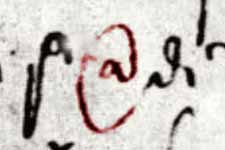
This letter written by a Florentine trader in 1536 contains what is the
earliest known example of the @ sign, the quintessential symbol of the
Internet. According to an Italian scholar, the symbol stands for "amphora,"
which was a weight unit used by ancient Greeks and Romans.
August 2, 2000 - Discovery Online
An Italian
scholar has discovered that
"amphora," a word referring
to a weight unit used by
ancient Greeks and
Romans, is the real name for the Internet's ubiquitous
squiggle, the @ sign used in email communications.
Giorgio Stabile, who teaches the history of science at
Rome's La Sapienza University, traced the origin of the @
sign to at least 500 years ago, when Italian merchants
invented it.
The evidence was hidden in
the archives at the
Francesco Datini Institute
of Economic History in
Prato, near Florence: a
letter written by Francesco
Lapi, a Florentine trader, on
May 4, 1536, clearly shows
what is the earliest known
example of the
quintessential symbol of
the Internet.
Describing the arrival in Spain of three ships bearing gold
and silver from Latin America, Lapi writes: "there an @ of
wine, which is one thirtieth of a barrel, is worth 70 or 80
ducats."
"In the document, the @ sign is the abbreviation for
amphora, a measure of capacity based on the terracotta
jars used for transportation in the ancient Mediterranean
world," said Stabile, who will publish his finding in a book
for the Treccani Encyclopedia by the end of the year.
The sign has been a central part of the Internet since Ray
Tomlinson chose it as a separator in email addresses in
1972. Cybernauts of various countries have given the
sign nicknames from snail to strudel and monkey's tail,
but the @ sign was believed to derive from the Latin word
"ad," meaning "to, toward, at."
The story goes that in late medieval cursive writing the
upright stroke of the "d" curved over to the left making a
loop around the "a."
"This theory has no support from a paleographic point of
view. In my research, I ignored the metaphors related to
the sign and considered the only two denominations with a
historical background: the English "commercial at" and
the Spanish "arroba," said Stabile.
Searching the commercial paleography, Stabile stumbled
into a Spanish-Latin dictionary of 1492: the word
"arroba" was translated as "amphora," showing that the
amphora weight unit was known both in the Greek-Latin
and in the Arab-Hispanic world.
The amphora was long used as a measuring unit in Venice
and along trade Routes running to Northern Europe.
There, it acquired its contemporary commercial meaning,
"at the price of."
"The story of the Latin roots of the sign was completely
wrong," said Armando Petrucci, professor of Latin
Paleography at Pisa University. "Finally, Stabile's
discovery sheds light on the history of this successful sign."
Ruins Reveal Emperor's Private Battleground
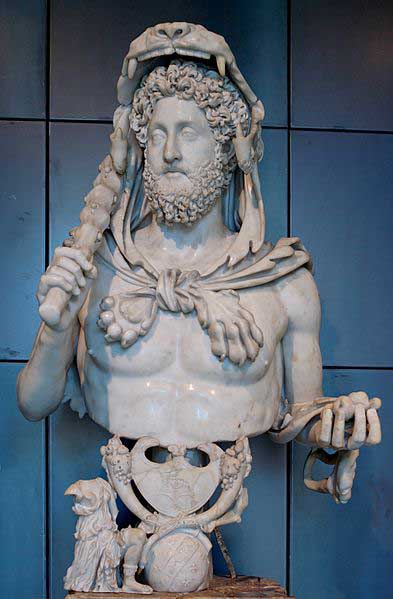
As emperor, Commodus was determined to cast himself as "Hercules
reborn." Excavations at villa suggest that he may have perfected his killing
skills in a private back garden arena.
July 26, 2000 - Discovery
The Roman
emperor Commodus might
have cultivated the
gladiator skills showcased in Ridley Scott's blockbuster
film Gladiator by building a personal miniature Colosseum
in the back garden of his villa.
Archaeologists believe that a large oval area bordered by
ruins in the Villa dei Quintili is in fact an arena used by
the emperor for private gladiator contests.
"There is a good chance it was Commodus' personal
arena. In fact, the building is connected with the private
part of his residence," Rita Paris, the state archaeologist
responsible for the excavation, told Rome's newspaper Il
Messaggero.
Commodus ruled Rome from 180 A.D., succeeding his
father Marcus Aurelius, until 192 A.D., when he was
strangled in his bath by a wrestler.
Immediately after he became emperor, he vaunted his
strength in gladiatorial combats at Rome's Colosseum.
The emperor confiscated the Villa dei Quintili in 182,
after he sent its owners, the Quintilius brothers, to death
for supposedly plotting against him. He then began a
renovation plan by adding rooms, baths, a heating
system, a thermal bath complex and the sporting arena.
The villa, recently restored and opened to visitors, is still
under an extensive digging program. Archaeologists think
they will find the final evidence for their claim as they get
to the base of the structure.
So far, the discovery in the adjacent area of basins
normally used by athletes for ablutions, as well as a large,
elongated area probably used as a gym, seems to confirm
the literary accounts of Commodus' arena performances
"in private."
According to his contemporary Dio Cassius, Commodus
killed men in his private gladiatorial bouts, and was known
for "slicing off a nose, an ear or various other parts of the
body."
An accomplished left-handed fighter, determined to cast
himself as "Hercules reborn," Commodus was also a
highly skilled beast-hunter who showed his ability in the
Colosseum by killing bears, tigers, hippopotamuses,
elephants, but also domestic animals.
He delighted the public by shooting crescent-headed
arrows at ostriches, who continued to dash around even
after they had been decapitated.
"The discovery at the Villa Quintili raises the question
whether Commodus perfected his skills in his own private
arena," said Jonathan Edmondson, an expert on Roman
spectacle and associate professor of history and
classical studies at York University, Toronto.
"This is a very exciting finding indeed. It is quite possible
for Commodus to have built a private amphitheater at the
villa. After all, a number of other villas in the countryside
around Rome had their private circuses."
1998
Hunch about ancient Roman port led to discovery of oldest church
December 29, 1998 - AP
It was an astonishing piece of luck. Following a hunch, Professor Thomas Parker
went looking for an ancient Roman trading port and dug up what may be the
oldest known Christian church.
Other structures converted to churches are older than the two-story mud-brick
building that Parker found in Aqaba, Jordan, a Red Sea resort city 210 miles
south of Amman. Parker's discovery, however, is the oldest building known to
exist that was erected solely as a Christian worshipping place, he said.
Built around 290 or 300 A.D. by early Christians, the church somehow survived
the "Great Persecution," when the Roman Emperor Diocletian ordered
churches razed and Christians tortured between 303 and 311. The church may
have been spared because it lay on the empire's southeastern periphery,
Parker said. It was destroyed by a cataclysmic earthquake in 363 and buried by
the desert.
Parker, 48, on the North Carolina State University history faculty since 1980,
became interested in Aqaba and its predecessor, the ancient Roman port of
Aila, when he shifted his scholarly research from Roman military history to
Roman economy. He found himself in the middle of a debate about how big a
role trade played.
"We didn't go to Aqaba to find the oldest church in the world, but to find
evidence of Roman economic activity," he said. "The discovery of the church
was an unexpected bonus."
Ancient historical texts suggested Aila's likely location in present-day Aqaba,
which lies at the head of the Gulf of Aqaba, an arm of the Red Sea. Parker and
his wife walked the area in 1993 after examining old British Royal Air Force
aerial photos. They found pottery shards that encouraged them to return in
1994. That year, he and his 50-person expedition found Aila in the middle of
a thriving port city that was undergoing a construction boom.
Upon returning with another expedition in 1996, Parker found the first evidence
of the buried church, but he was cautious initially. Only when his crew last
summer excavated the apse on the eastern end of the building did he become
confident enough to consider announcing his findings. "It was the last piece of
the puzzle that told me we had a persuasive case," he said. "It wasn't until we
had the complete plan, the complete chronological sequence before I started
sticking my neck out," Parker said.
The church, 28 yards by 16 yards and with five aisles, wasn't especially large
or ornate. "There were no beautiful accoutrements, no marble, as in the later
churches. It was a very functional church for a middling-sized congregation" of
no more than a few hundred, he said. He said four lines of evidence support his
belief the church was Christian and dated to 290 or 300.
-It is oriented to the East, as were all early churches.
-It was laid out in a basilica plan, with a nave, apse, chancel and aisles.
-There is an adjacent cemetery. One of the 25 graves exhumed yielded an arm
of a brass cross.
-It was illuminated with glass oil lamps filled with olive oil, which were not found
in residences of that time. The lamps, pottery and chandeliers all conform to a
construction date of about 300 A.D., he said.
Seven stone risers from a staircase indicate the church had a second story,
Parker said. About 100 coins from the 4th century were found scattered about
a small room, near a charred box, possibly a collection box that burned when the
earthquake destroyed the church, Parker said. He plans to return with another
team in 2000 and spend the interim year sifting through the three tons of artifacts
that he brought back. Parker said additional digging may yield firmer evidence of the
church's construction date. For example, black-and-red paint flecks on bits of
excavated plaster provide hope a better fresco might be found in still-buried
parts of the church.
He said Aqaba, Jordan's only major port, is fast becoming a major tourist
attraction and a major hotel building program is in progress. Jordanian officials
were quick to grasp that the ruins he is excavating will only draw more tourists
and have cooperated in preserving the site. "If we can show off the oldest church
in the world, it would enhance the economy, it would perform a cultural service and
fulfill an economic need," Parker said.
Sawsan Fakhiri, director of the Aqaba Antiquities Department, earlier said the
ruins very likely are remains of a church built in the late 3rd century, but said
more study is needed. Other historians have reacted with similar restraint, with
some holding out for an inscription or artifacts firmly placing the structure in the
3rd century.
Older churches than the one in Aila exist, but they all were homes converted to
that purpose. One in Dura Luropos in Syria dates to about 230 A.D., said
Parker. It went out of use when Persians captured the city in 256.
After Diocletian's anti-Christian crusade, it wasn't long before the Roman
Empire became Christian and more churches went up, sanctioned by the
imperial government.
Constantine, the first Christian emperor, gained control of both halves of the
empire in 324, and his mother, Helena, embarked on a church-building
campaign the next year. Some of the most famous structures from that era
remain open today - for example, the Church of the Holy Sepulchre in
Jerusalem and the Church of the Nativity in Bethlehem.
ROME INDEX
ANCIENT CIVILIZATIONS INDEX
ALPHABETICAL INDEX OF ALL FILES
CRYSTALINKS MAIN PAGE





The epic romance between Egyptian queen Cleopatra and the Roman general Marc Antony was immortalized on a Roman vase.
Before Columbus discovered the New World, Italy had no arthritis or syphilis.
After 10 years of digging, "Little Rome," as the great Roman orator Cicero called it, is coming to light nearNaples, in what could be the most important discovery of an ancient Roman town since theexcavation of lava-entombed Pompeii and Herculaneum in the 18th century.

The Romans invented many things but it may come as a surprise to some that they could also be responsible for a rudimentary version of virtual reality.
An ancient obelisk which has been at the center of a dispute between Italy and Ethiopia has been damaged.

